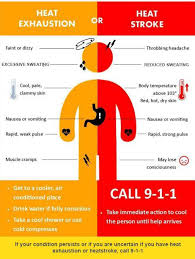As summer intensifies, the National Weather Service (NWS) has issued a heat advisory for large parts of the southern and midwestern United States. With heat index values expected to soar above 100°F (38°C) in some regions, authorities are urging residents to take necessary precautions to avoid heat-related illnesses.
Table of Contents
What is a Heat Advisory?
A heat advisory is issued when the heat index — a measure of how hot it feels when relative humidity is factored in with the actual air temperature — is expected to reach dangerous levels. According to the National Weather Service, these advisories are typically issued when the heat index is forecasted to reach 100°F to 105°F for at least two consecutive days.
Areas Affected
States currently under the heat advisory include:
- Texas
- Louisiana
- Oklahoma
- Arkansas
- Mississippi
- Parts of Missouri and Kansas
Cities like Dallas, Houston, Little Rock, and New Orleans are among the hardest hit. Local authorities are setting up cooling centers and extending pool hours to help residents cope with the extreme conditions.
Health Risks Associated with Extreme Heat
Exposure to high temperatures can lead to serious health conditions such as:
- Heat exhaustion
- Heat stroke (a medical emergency)
- Dehydration
- Respiratory issues, especially among the elderly and children
The Centers for Disease Control and Prevention (CDC) warns that individuals over 65, young children, and people with chronic illnesses are at higher risk. Learn more about heat-related illnesses from the CDC’s official site.
Tips to Stay Safe During a Heat Advisory

Here are essential precautions to take:
- Stay indoors during the peak heat hours (10 a.m. – 4 p.m.)
- Drink plenty of fluids, especially water. Avoid caffeine and alcohol.
- Wear lightweight, loose-fitting clothing
- Never leave children or pets in parked cars
- Use fans, AC units, or visit public cooling centers
For more detailed tips on health, technology, and emergency preparedness during extreme weather, visit Megtaza.
What Authorities Are Doing
Local governments are taking multiple measures including:
- Activating emergency hotlines
- Opening public libraries and recreation centers as cooling stations
- Dispatching health professionals to check on vulnerable populations
According to recent updates from CNN Weather, some areas could see continued high temperatures into next week.
Final Thoughts
Heat advisories are not just a weather alert — they are a public health warning. Everyone is urged to monitor local forecasts, stay hydrated, and check in on elderly neighbors and family members. With proper precautions, the risk of heat-related illness can be significantly reduced.
Stay informed, stay cool, and stay safe.
FAQs
Q: How long do heat advisories usually last?
A: They typically last 1–3 days, depending on the persistence of high temperatures and humidity.
Q: What is the difference between a heat advisory and an excessive heat warning?
A: A heat advisory is issued for less extreme conditions than an excessive heat warning, which indicates a much more dangerous situation.
Q: Can I exercise during a heat advisory?
A: It is best to avoid strenuous activities during peak heat hours. Opt for early mornings or late evenings, and stay hydrated.
